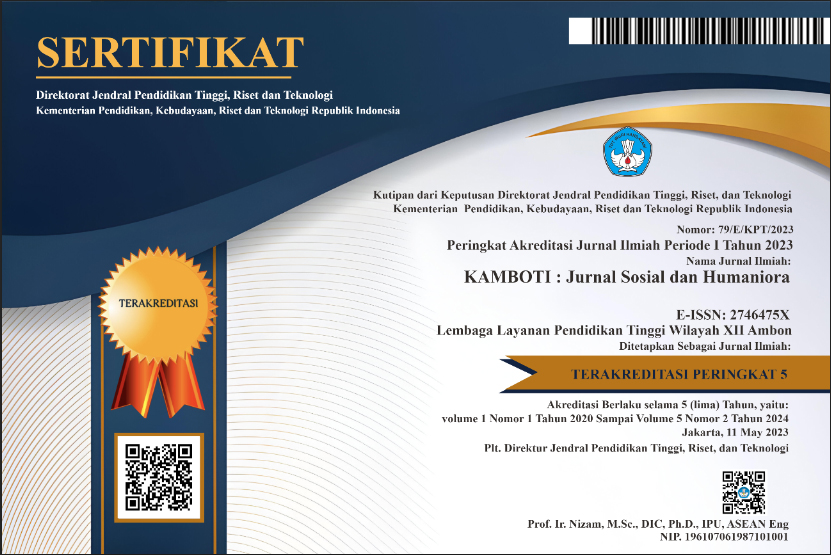Efektivitas Komunikasi Interpersonal Antara Guru dan Siswa dalam Proses Belajar Mengajar di SMK Negeri 7 Ambon
DOI:
https://doi.org/10.51135/kambotivol2issue1page41-49Keywords:
Effectiveness, Interpersonal Communication, LearningAbstract
Effectiveness of interpersonal communication (interpersonal) in the teaching and learning process to realize the ideals of national education, which in the end the quality of implementation lies in the hands of the teacher. As for the teaching and learning process, the source message can be delivered from students, teachers, and so on. With interpersonal communication in a persuasive and effective manner, communication between teachers and students in the teaching and learning process can help motivation and encourage students to move in a positive direction. The purpose of this study was to determine how the effectiveness of teacher and student interpersonal communication in the teaching and learning process at SMK Negeri 7 Ambon and to find out what factors could be a constraint on the effectiveness of teacher and student interpersonal communication in the teaching and learning process at SMK Negeri 7 Ambon. This study uses qualitative research with data collection techniques are observation and interview techniques. From the results of this study, it was seen that students sometimes did not understand the material provided by the teacher and had difficulty in making assignments because the way the material was delivered by the teacher was considered unclear by students. And the personal closeness between students and teachers, so that it also affects the teaching and learning process in the classroom.
Downloads
Published
10-10-2021
Issue
Section
Articles
License
Copyright (c) 2021 KAMBOTI: Jurnal Sosial dan Humaniora

This work is licensed under a Creative Commons Attribution-ShareAlike 4.0 International License.
How to Cite
Muskita, M. (2021). Efektivitas Komunikasi Interpersonal Antara Guru dan Siswa dalam Proses Belajar Mengajar di SMK Negeri 7 Ambon. KAMBOTI: Jurnal Sosial Dan Humaniora, 2(1), 41-49. https://doi.org/10.51135/kambotivol2issue1page41-49



